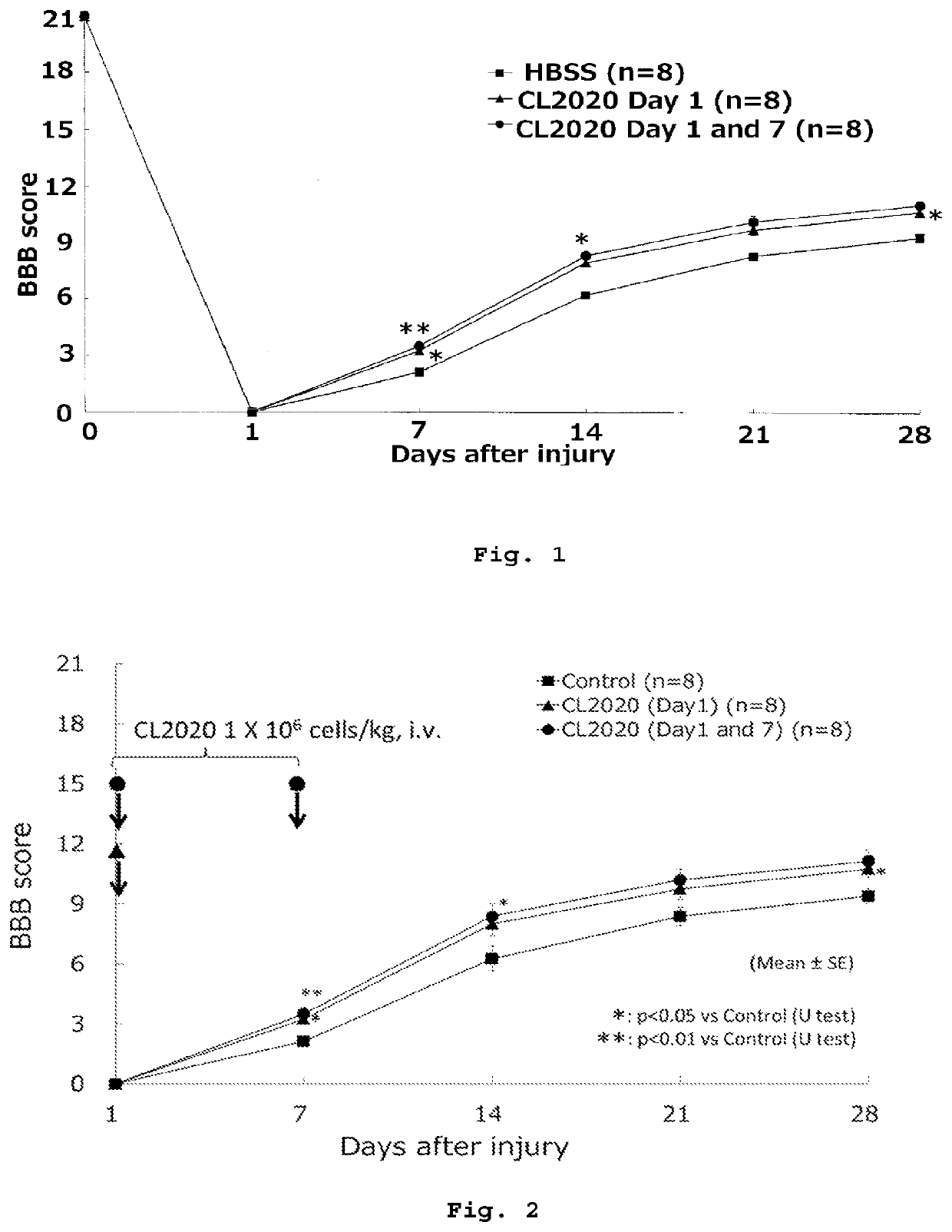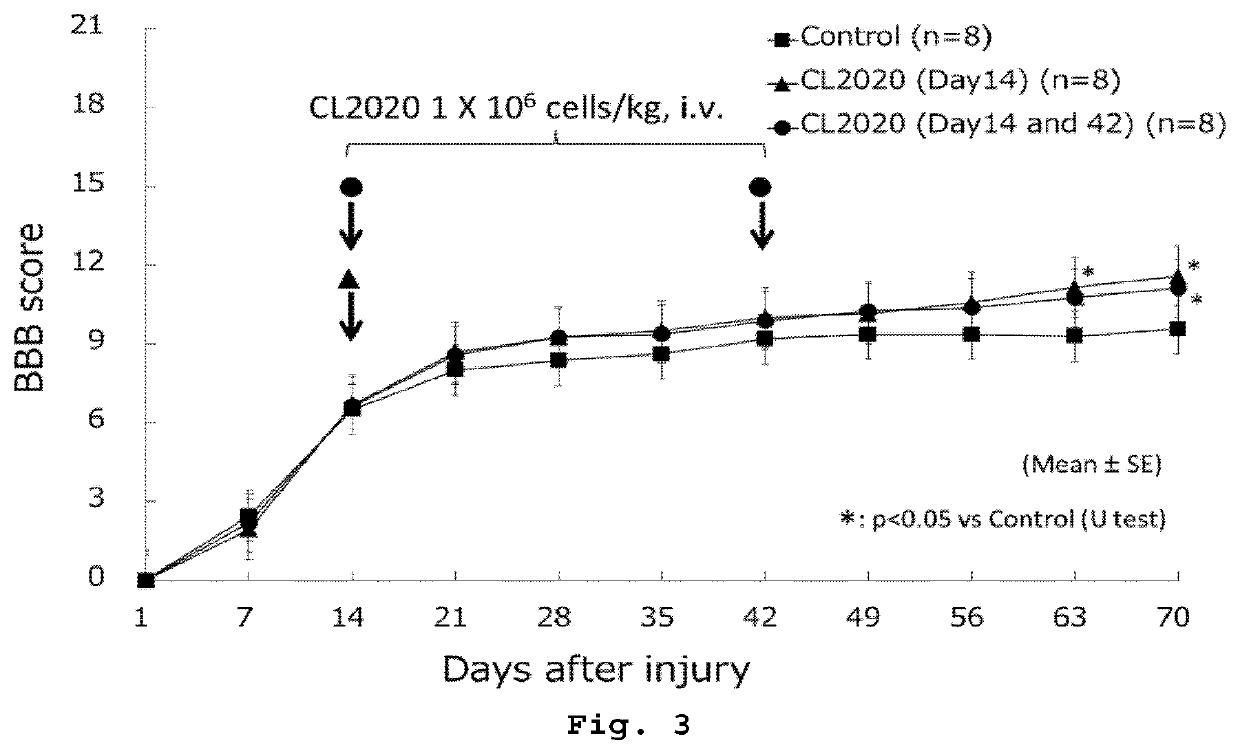Therapeutic agent for spinal cord injury
a technology of spinal cord injury and therapeutic agent, which is applied in the field of cell product in regenerative therapy, can solve the problems of inability to repair or regenerate the central nervous system, including the spinal cord, to achieve the effect of improving or restoring motor functions and excellent safety
- Summary
- Abstract
- Description
- Claims
- Application Information
AI Technical Summary
Benefits of technology
Problems solved by technology
Method used
Image
Examples
example 1-1
of Rat Model of Spinal Cord Injury
[0073]An 11-week-old female SD rat was anesthetized, then subjected to laminectomy of the 9-10th thoracic vertebrae to expose the spinal cord, and then a weight (2.5 mm in diameter, 10 g in weight) was immediately dropped from a height of 25 mm using a MASCIS Impactor (Rutgers University, USA) to injure the spinal cord (8 rats each in 3 groups).
example 1-2
of Human Muse Cell
[0074]Muse cells were obtained according to the method described in WO2011 / 007900 on isolation and identification of human Muse cells. More specifically, Muse cells were obtained by expansive enrichment culture of mesenchymal stem cells under stress conditions.
example 1-3
ion of Cells to Rat Model of Spinal Cord Injury
[0075]Rats were divided into three groups of eight rats each. The first group received 5×106 cells / kg of body weight of Muse cells by tail vein injection at Day 1 after spinal cord injury (single dose group). The second group received each 5×106 cells / kg of body weight of Muse cells by tail vein injection at Days 1 and 7 after spinal cord injury (multiple dose group). The third group received a vehicle (HBSS) by tail vein injection at Day 1 after spinal cord injury (control group).
PUM
 Login to View More
Login to View More Abstract
Description
Claims
Application Information
 Login to View More
Login to View More - R&D
- Intellectual Property
- Life Sciences
- Materials
- Tech Scout
- Unparalleled Data Quality
- Higher Quality Content
- 60% Fewer Hallucinations
Browse by: Latest US Patents, China's latest patents, Technical Efficacy Thesaurus, Application Domain, Technology Topic, Popular Technical Reports.
© 2025 PatSnap. All rights reserved.Legal|Privacy policy|Modern Slavery Act Transparency Statement|Sitemap|About US| Contact US: help@patsnap.com


